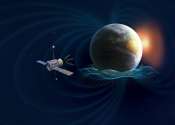Early riser: The sun is already starting its next solar cycle—despite being halfway through its current one
The first rumblings of the sun's next 11-year solar cycle have been detected in sound waves inside our home star—even though it is only halfway through its current one.









